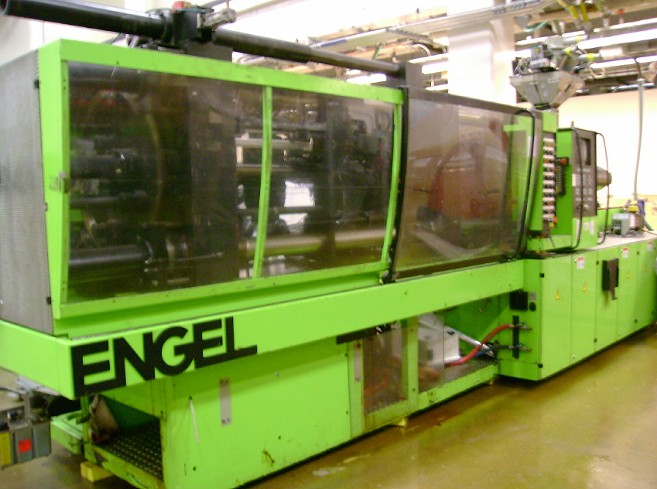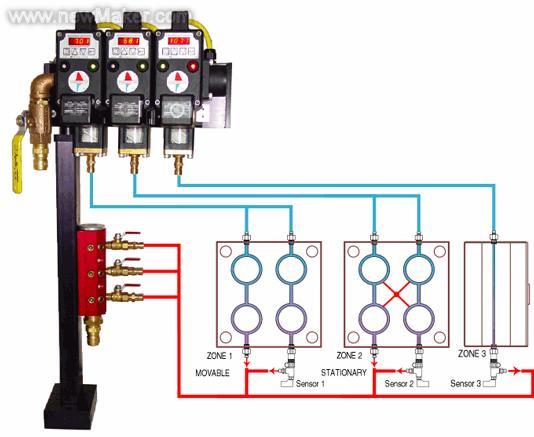SPIRIT III Clinical Trial of the XIENCE V Everolimus Eluting
luyued 发布于 2011-03-01 01:32 浏览 N 次This study is ongoing, but not recruiting participants.
Study NCT00180479 Information provided by Abbott Vascular
First Received: September 13, 2005 Last Updated: July 29, 2010 History of Changes
Tracking Information
First Received Date ICMJE
September 13, 2005
Last Updated Date
July 29, 2010
Start Date ICMJE
June 2005
Primary Completion Date
December 2006 (final data collection date for primary outcome measure)
Current Primary Outcome Measures ICMJE
(submitted: July 29, 2010)
Primary Endpoint: In-segment Late Loss (LL) [ Time Frame: 240 days ] [ Designated as safety issue: Yes ]
In-segment minimal lumen diameter (MLD) post-procedure minus (-) in segment MLD at 240 day follow-up and 5 mm proximal and 5mm distal to the stent equals Late Loss. MLD defined: The average of two orthogonal views (when possible) of the narrowest point within the area of assessment.
Original Primary Outcome Measures ICMJE
(submitted: September 13, 2005)
- Primary Endpoint: In-segment late loss (LL) at 240 days
- Major Secondary Endpoint: Ischemia driven target vessel failure (TVF) at 270 days
Change History
Complete list of historical versions of study NCT00180479 on ClinicalTrials.gov Archive Site
Current Secondary Outcome Measures ICMJE
(submitted: July 29, 2010)
- Major Secondary Endpoint: Ischemia Driven Target Vessel Failure (ID-TVF) [ Time Frame: 270 days ] [ Designated as safety issue: Yes ]
The composite endpoint comprised of:
- Cardiac death (death in which a cardiac cause cannot be excluded)
- Myocardial infarction (MI, classified as Q-wave and non-Q wave)
- Ischemia-driven target lesion revascularization (TLR) by CABG or PCI
- Ischemia-driven target vessel revascularization (TVR) by CABG or PCI
- Target Vessel Failure (TVF) [ Time Frame: 30 days ] [ Designated as safety issue: Yes ]
The composite endpoint comprised of:
- Cardiac death (death in which a cardiac cause cannot be excluded)
- Myocardial infarction (MI, classified as Q-wave and non-Q wave)
- Ischemia-driven target lesion revascularization (TLR) by CABG or PCI
- Ischemia-driven target vessel revascularization (TVR) by CABG or PCI
- Target Vessel Failure (TVF) [ Time Frame: 180 days ] [ Designated as safety issue: No ]
The composite endpoint comprised of:
- Cardiac death (death in which a cardiac cause cannot be excluded)
- Myocardial infarction (MI, classified as Q-wave and non-Q wave)
- Ischemia-driven target lesion revascularization (TLR) by CABG or PCI
- Ischemia-driven target vessel revascularization (TVR) by CABG or PCI
- Target Vessel Failure (TVF) [ Time Frame: 1 year ] [ Designated as safety issue: No ]
The composite endpoint comprised of:
- Cardiac death (death in which a cardiac cause cannot be excluded)
- Myocardial infarction (MI, classified as Q-wave and non-Q wave)
- Ischemia-driven target lesion revascularization (TLR) by CABG or PCI
- Ischemia-driven target vessel revascularization (TVR) by CABG or PCI
- Target Vessel Failure (TVF) [ Time Frame: 2 year ] [ Designated as safety issue: No ]
The composite endpoint comprised of:
- Cardiac death (death in which a cardiac cause cannot be excluded)
- Myocardial infarction (MI, classified as Q-wave and non-Q wave)
- Ischemia-driven target lesion revascularization (TLR) by CABG or PCI
- Ischemia-driven target vessel revascularization (TVR) by CABG or PCI
- Target Vessel Failure (TVF) [ Time Frame: 3 year ] [ Designated as safety issue: Yes ]
The composite endpoint comprised of:
- Cardiac death (death in which a cardiac cause cannot be excluded)
- Myocardial infarction (MI, classified as Q-wave and non-Q wave)
- Ischemia-driven target lesion revascularization (TLR) by CABG or PCI
- Ischemia-driven target vessel revascularization (TVR) by CABG or PCI
- Ischemia Driven Target Lesion Revascularization (ID-TLR) [ Time Frame: 30 days ] [ Designated as safety issue: No ]
Revascularization @ target lesion associated w/ any of following:
(+) functional ischemia study Ischemic symptoms & angiographic diameter stenosis ≥50% by core lab quantitative coronary angiography (QCA) Revascularization of a target lesion w/ angiographic diameter stenosis ≥70% by core laboratory QCA without angina or (+) functional study
- Ischemia Driven Target Lesion Revascularization (ID-TLR) [ Time Frame: 180 days ] [ Designated as safety issue: No ]
Revascularization @ target lesion associated w/ any of following:
(+) functional ischemia study Ischemic symptoms & angiographic diameter stenosis ≥50% by core lab quantitative coronary angiography (QCA) Revascularization of a target lesion w/ angiographic diameter stenosis ≥70% by core laboratory QCA without angina or (+) functional study
- Ischemia Driven Target Lesion Revascularization (ID-TLR) [ Time Frame: 270 days ] [ Designated as safety issue: No ]
Revascularization @ target lesion associated w/ any of following:
(+) functional ischemia study Ischemic symptoms & angiographic diameter stenosis ≥50% by core lab quantitative coronary angiography (QCA) Revascularization of a target lesion w/ angiographic diameter stenosis ≥70% by core laboratory QCA without angina or (+) functional study
- Ischemia Driven Target Lesion Revascularization (ID-TLR) [ Time Frame: 1 years ] [ Designated as safety issue: No ]
Revascularization @ target lesion associated w/ any of following:
(+) functional ischemia study Ischemic symptoms & angiographic diameter stenosis ≥50% by core lab quantitative coronary angiography (QCA) Revascularization of a target lesion w/ angiographic diameter stenosis ≥70% by core laboratory QCA without angina or (+) functional study
- Ischemia Driven Target Lesion Revascularization (ID-TLR) [ Time Frame: 2 years ] [ Designated as safety issue: No ]
Revascularization @ target lesion associated w/ any of following:
(+) functional ischemia study Ischemic symptoms & angiographic diameter stenosis ≥50% by core lab quantitative coronary angiography (QCA) Revascularization of a target lesion w/ angiographic diameter stenosis ≥70% by core laboratory QCA without angina or (+) functional study
- Ischemia Driven Target Lesion Revascularization (ID-TLR) [ Time Frame: 3 year ] [ Designated as safety issue: No ]
Revascularization @ target lesion associated w/ any of following:
(+) functional ischemia study Ischemic symptoms & angiographic diameter stenosis ≥50% by core lab quantitative coronary angiography (QCA) Revascularization of a target lesion w/ angiographic diameter stenosis ≥70% by core laboratory QCA without angina or (+) functional study
- Ischemia Driven Target Vessel Revascularization (ID-TVR) [ Time Frame: 30 days ] [ Designated as safety issue: No ]
Revascularization at the target vessel associated with any of the following
- Positive functional ischemia study
- Ischemic symptoms and angiographic diameter stenosis ≥ 50% by core laboratory QCA
- Revascularization of a target vessel with angiographic diameter stenosis ≥ 70% by core laboratory QCA without angina or positive functional study
- Ischemia Driven Target Vessel Revascularization (ID-TVR) [ Time Frame: 180 days ] [ Designated as safety issue: No ]
Revascularization at the target vessel associated with any of the following
- Positive functional ischemia study
- Ischemic symptoms and angiographic diameter stenosis ≥ 50% by core laboratory QCA
- Revascularization of a target vessel with angiographic diameter stenosis ≥ 70% by core laboratory QCA without angina or positive functional study
- Ischemia Driven Target Vessel Revascularization (ID-TVR) [ Time Frame: 270 days ] [ Designated as safety issue: Yes ]
Revascularization at the target vessel associated with any of the following
- Positive functional ischemia study
- Ischemic symptoms and angiographic diameter stenosis ≥ 50% by core laboratory QCA
- Revascularization of a target vessel with angiographic diameter stenosis ≥ 70% by core laboratory QCA without angina or positive functional study
- Ischemia Driven Target Vessel Revascularization (ID-TVR) [ Time Frame: 1 year ] [ Designated as safety issue: No ]
Revascularization at the target vessel associated with any of the following
- Positive functional ischemia study
- Ischemic symptoms and angiographic diameter stenosis ≥ 50% by core laboratory QCA
- Revascularization of a target vessel with angiographic diameter stenosis ≥ 70% by core laboratory QCA without angina or positive functional study
- Ischemia Drive Target Vessel Revascularization (ID-TVR) [ Time Frame: 2 years ] [ Designated as safety issue: No ]
Revascularization at the target vessel associated with any of the following
- Positive functional ischemia study
- Ischemic symptoms and angiographic diameter stenosis ≥ 50% by core laboratory QCA
- Revascularization of a target vessel with angiographic diameter stenosis ≥ 70% by core laboratory QCA without angina or positive functional study
- Ischemia Drive Target Vessel Revascularization (ID-TVR) [ Time Frame: 3 years ] [ Designated as safety issue: No ]
Revascularization at the target vessel associated with any of the following
- Positive functional ischemia study
- Ischemic symptoms and angiographic diameter stenosis ≥ 50% by core laboratory QCA
- Revascularization of a target vessel with angiographic diameter stenosis ≥ 70% by core laboratory QCA without angina or positive functional study
- Ischemia Driven Major Adverse Cardiac Event (MACE) [ Time Frame: 30 days ] [ Designated as safety issue: Yes ]
The composite endpoint comprised of:
- Cardiac death
- Myocardial infarction (MI, classified as Q-wave and non-Q wave)
- Ischemia-driven target lesion revascularization (TLR) by CABG or PCI
- Ischemia Driven Major Adverse Cardiac Event (MACE) [ Time Frame: 180 days ] [ Designated as safety issue: Yes ]
The composite endpoint comprised of:
- Cardiac death
- Myocardial infarction (MI, classified as Q-wave and non-Q wave)
- Ischemia-driven target lesion revascularization (TLR) by CABG or PCI
- Ischemia Driven Major Adverse Cardiac Event (MACE) [ Time Frame: 270 days ] [ Designated as safety issue: Yes ]
- 06-21· 爱可视605WIFI暑促!购机还送
- 06-21· 疯狂降价1200元爱可视404
- 06-11· Ellen呼吁粉丝协力阻止捕杀
- 06-11· 【引用】『八卦』未来英
- 06-10· 升级Android 2.2!爱可视101评
- 06-10· 爱可视环球首发5款Androi
- 06-09· 台湾母子3人因贫病交迫中
- 06-09· Genetically modified tobacco co
- 06-09· 英国《独立报》:中国女演
- 06-09· Rascal Flatts - Summer Nights (
- 06-09· 收音机厂商(22)
- 06-08· 问板终极贴【2009年6月20日
- 06-08· 爱可视平板电脑新品 让你
- 06-08· 升级Android2.2!爱可视101平板
- 06-08· 法国爱可视推出限量版上
- 06-08· 高清之王爱可视AV530仅售
- 06-08· ARCHOS-605 爱可视--30GB-触摸
- 06-08· [转载]【原创】爱可视10
- 06-07· c++标准库中endl的实现(转
- 06-07· 单指令多数据的程序优化




![[原创]爱可视,因你而精彩](http://www.okpinpai.net/uploads/userup/3/142199037279.jpg)





